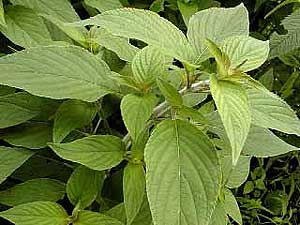|
from autumn 2001 blue vol II | |||
|
|||
|

Far too popular as a stuffing for poultry with onion and breadcrumbs (in Britain and North America), and as a companion to butter as a cooking medium (in northern Italy) sage is a versatile aromatic, evergreen shrub native to southern Europe. Its use as a stuffing has made it a popular ingredient in poultry (Britain), meat (France and Germany) and fish (Norway). In northern European climates it is also used in dishes made from ham, pork, veal and venison - in meat loaves and sausages - and is added to marinades and sauces. In Lombardy it is an essential cooking ingredient with butter - as a cooking fat and as a dressing of pasta dishes. With all that fatty meat it's no wonder sage is needed and probably the reason why it is over-used. For sage is another herb thought of down through the ages as a cure-all. As well as being good for sore throats and a great thirst quencher, sage tea drank regularly is a gateway to Tir na Nog - the land of eternal youth. So the herbalists tell us, the Celtic variety probably! While sage is a seemingly involuable ingredient in meat dishes, its uses in vegetable dishes is largely ignored. Sage goes well with any vegetable. It adds a pungent flavour to tomato sauces and adds flavour if included with steamed vegetables - such as young cabbage and carrots. It goes especially well in bean and vegetables soups.
Yet sage, with its slightly spicy and bitter aftertaste,
remains a herb susceptible to personal
taste. If only for its use as a tissane, it should be
an essential ingredient in the vegan kitchen.
Best grown outdoors, unless you have no access to a
garden, sage needs a sunny position in warm, dry soil.
Indoor sage plants can be kept anywhere.
|
